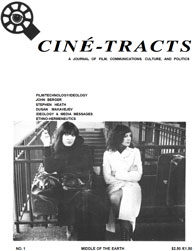Transdisciplinary Thinking and Learning
 Tuesday, November 8, 2005 at 12:33AM
Tuesday, November 8, 2005 at 12:33AM I have been an educator, administrator, writer and creative artist for over thirty-five years. During that time, most of the disciplines with which I have been involved have changed. For better or for worse, the very nature of disciplines (of both an artistic and analytic nature), their function and their role within and outside of institutions has been immeasurably altered. The context for this change is not just the individual nature or history of one or other disciplines or practices. Rather, the social and cultural conditions for the creation and communication of ideas, artifacts, knowledge and information have been transformed. From my point of view, this transformation has been extremely positive. It has resulted in the formation of new disciplines and new approaches to comprehending the very complex nature of Western Societies. However, we are still a long way from developing a holistic understanding of the implications of these social and cultural shifts.
From a cultural point of view, the impact of this process of transformation first appeared in the early 20th century when the cinema became a mass medium and accelerated with the advent of radio and then television (although there are many parallels with what happened to literature and photography in the 19th century). Networked technologies have added another layer to the changes and another level of complexity to the ways in which ideas are communicated and discussed, as well as learned. The conventions that have governed communications processes for over fifty years have been turned inside out by the Internet and this has led to some fundamental redefinitions of information, knowledge, space and time.
Time, for example, does change when the metaphors that we have available for explaining temporal shifts are no longer rooted in conventional notions of seasonal shift and measurement of incremental change. Technology plays a role, but it is not the only player in what has been a dramatic move from an industrial/agrarian society to a mixed environment that is extremely dependent on cultural activity, networks and information.
The disjunctures at work in our society and the upheavals caused by profound cultural and social change have begun to affect the orientation, direction and substance of many different academic and art-related disciplines. Some of these disciplines have been around for a long time. I would suggest that most disciplines have been under extreme stress for the better part of the 20th century.
We are very likely in the early stages of a long-term shift in direction and it may take some time yet before that shift is fully understood. One important way of understanding this shift is through the an examination of what has happened to learning in the digital age and the role that technology has played in sustaining and sometimes inhibiting changes in the way learning takes place both inside and outside institutions.



